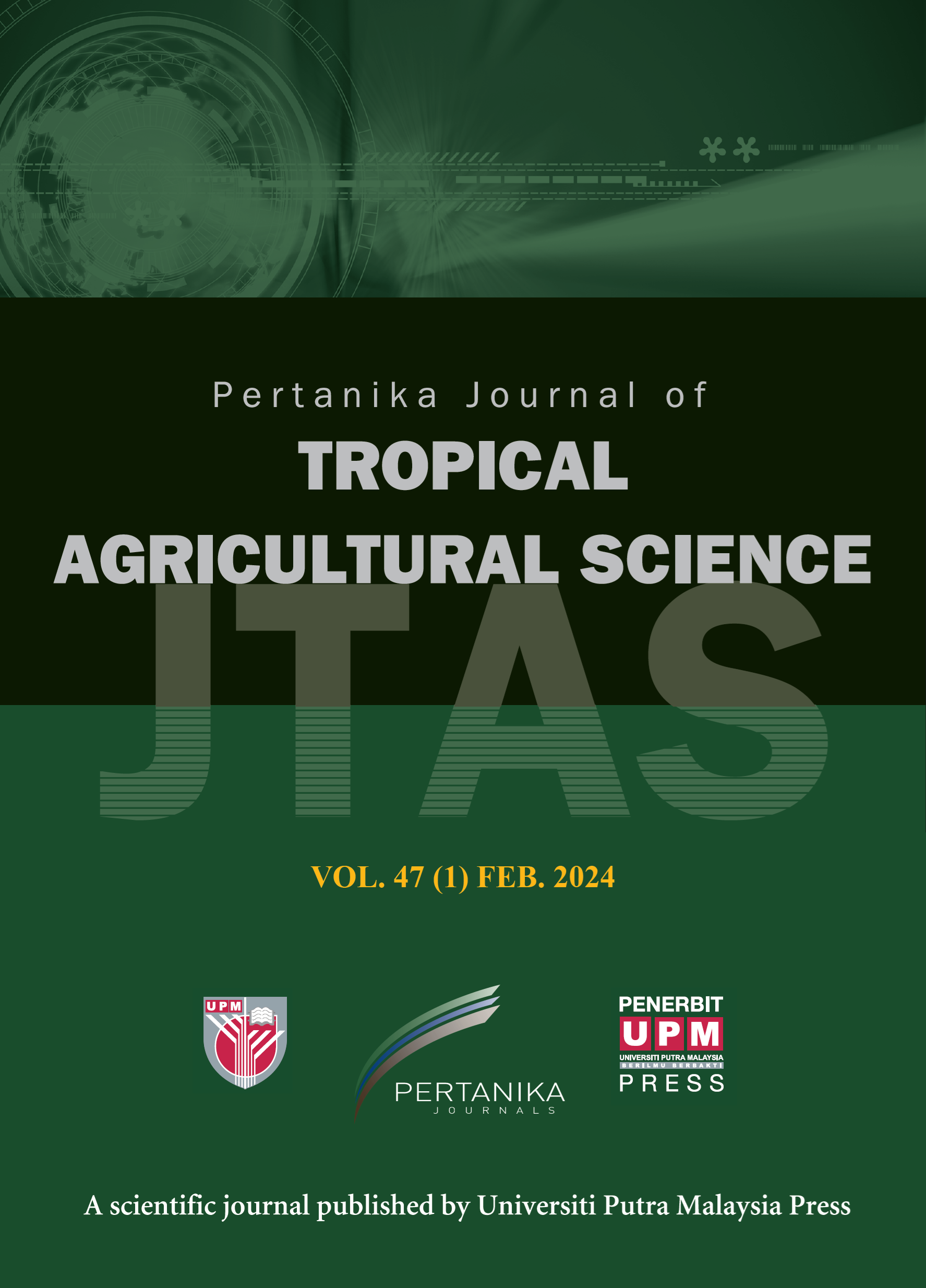PERTANIKA JOURNAL OF TROPICAL AGRICULTURAL SCIENCE
e-ISSN 2231-8542
ISSN 1511-3701
Toxicity Assessment of Ethanolic Moringa oleifera Leaf Extract (MOLE) Using Zebrafish (Danio rerio) Model
Intan Nurzulaikha Abdul Zahid, Seri Narti Edayu Sarchio, Nur Liyana Daud, Suhaili Shamsi and Elysha Nur Ismail
Pertanika Journal of Tropical Agricultural Science, Volume 48, Issue 3, May 2025
DOI: https://doi.org/10.47836/pjtas.48.3.14
Keywords: Moringa oleifera, toxicity, zebrafish embryo
Published on: 2025-05-16
Moringa oleifera, locally known as ‘Kelor’ in Malay, is a medicinal plant valued in Malaysia and other countries for its therapeutic bioactive compounds and health benefits, including anticancer and anti-inflammatory properties. However, the toxicity profile of ethanolic M. oleifera leaf extract (MOLE) has not been well explored. This study aims to assess the toxicity profile of MOLE using a zebrafish (Danio rerio) model. Zebrafish embryos were subjected to MOLE (n ≥ 15; 24 h post-fertilisation [hpf]) at a concentration of 5-1000 μg/mL, and the survival rate, hatching rate, heart rate, and morphological development of zebrafish embryos were monitored daily for up to 72 h. Embryo media was used as a control. MOLE treatment was shown to be safe at concentrations ≤ 400 μg/mL with LC50 values of 1186 ±7 μg/mL, 560.1 ±7 μg/mL, and 445.1 ± 7 μg/mL at 24, 48, and 72 h post-treatment, respectively. A significant mortality rate and low heartbeat were recorded in embryos exposed to > 800 μg/mL across the three-time points. MOLE did not affect the hatching rate. A significant difference in embryos treated with > 800 μg/mL at 72 h post-treatment was not attributable to MOLE effects, as the embryos had died before hatching. Scoliosis was predominantly observed in embryos subjected to MOLE concentrations ranging from 25 to 200 μg/mL. The present data demonstrated that MOLE exhibited concentration- and time-dependent toxicities. Further studies are needed to identify the effective concentrations of MOLE for therapeutic application in in vitro and in vivo models.
ISSN 1511-3701
e-ISSN 2231-8542




